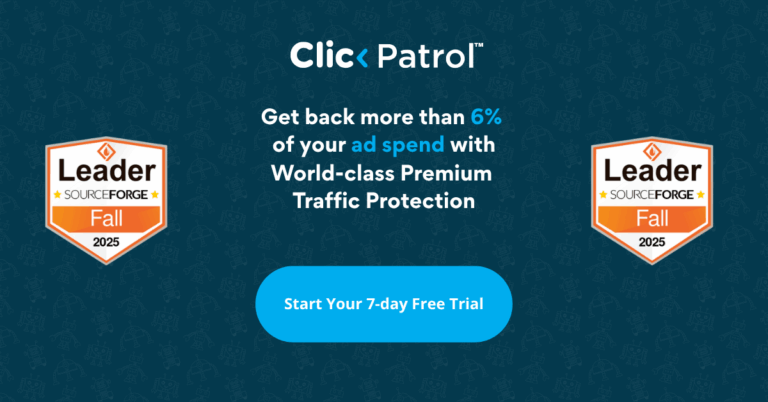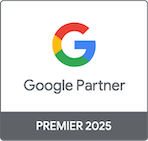Common issues include low-quality site ad placements, invalid bot traffic reaching 28.5% in mobile apps, and irrelevant placements that waste 20-30% of spend, per reports from Adweek and Pixelate.
How to solve ad targeting problems using layered audiences for better ROI and brand safety
Abisola Tanzako | Nov 11, 2025

Table of Contents
- Understanding ad targeting problems: How bad placements drain your budget
- Wasted clicks and impressions
- Exposure to fake or bot traffic
- Distorted performance data
- Brand reputation damage
- Reduced audience quality
- What are layered audiences, and how they fix ad targeting problems
- Combining multiple data signals
- Filtering out irrelevant traffic
- Reducing exposure to fraudulent clicks
- Improving ad spend efficiency
- Strengthening brand safety
- The impact of ad targeting problems: why your ads are underperforming
- Step-by-step: How layered audiences reduce ad targeting problems and boost ROI
- Step 1: Audit your targeting
- Step 2: Build your base layer
- Step 3: Add behavioural or remarketing layers
- Step 4: Apply contextual and exclusion layers
- Step 5: Optimize and iterate
- How ClickPatrol’s real-time exclusions strengthen layered audience targeting
- Case studies
- Case study 1: Giordano boosts engagement
- Case study 2: Avis cuts fake traffic, soars 123% in conversions
- Best practices for implementing layered audiences
- Turning ad waste into real ROI with targeting
Ad targeting problems can quickly turn a promising campaign into a costly mistake.
You might spend thousands on ads that end up on irrelevant or suspicious websites, reaching bots instead of real people.
Statista projects that global digital ad fraud losses will hit $172 billion by 2028, up from $88 billion in 2023. It shows how bad placements and fake clicks continue to undermine ROI and advertiser confidence.
That’s where ClickPatrol steps in to help advertisers take back control with tools that emphasise quality over quantity, ensuring ads appear only on trusted sites.
This article explores how ad targeting problems arise, the impact of bad placements, and how to use layered audience strategies and ClickPatrol’s exclusion tools to increase relevance, protect ROI, and prevent ad fraud.
Understanding ad targeting problems: How bad placements drain your budget
Ad targeting problems often stem from where your ads appear. When ads appear on irrelevant or fraudulent websites, they drain your budget without delivering meaningful results.
Below are key ways bad placements silently drain your ad spend:
Wasted clicks and impressions
Ads placed on low-quality or irrelevant sites attract clicks from people who have no real interest in your product or service.
These clicks inflate your metrics but rarely lead to conversions, driving up your CPC and CPA while reducing your ROAS.
Exposure to fake or bot traffic
Fraudulent websites often use bots to mimic human behaviour. Means your ads may be getting “viewed” or “clicked” by automated programs, not real users.
As a result, you pay for engagement that doesn’t translate into sales or brand awareness.
Distorted performance data
Invalid clicks and fake impressions make your campaign reports unreliable.
You might think a particular channel or creative is performing well when it’s actually being boosted by fake traffic, making it harder to optimize.
Brand reputation damage
Ads appearing next to inappropriate, offensive, or unrelated content can hurt your brand’s image.
Customers might associate your business with negative connotations, leading to a loss of trust and credibility.
Reduced audience quality
Broad targeting or unchecked automated placements often lead to ads being shown to the wrong audiences.
What are layered audiences, and how they fix ad targeting problems
Layered audiences are a strategic targeting approach that combines multiple audience filters to ensure your ads reach only the most relevant and high-quality users.
Instead of relying on a single targeting criterion, like interests or demographics, layered targeting combines multiple data points to narrow your focus and block unqualified or suspicious traffic. Here’s how it works and why it matters:
Combining multiple data signals
Layered audience targeting uses a mix of demographics (age, location, gender), behaviour (recent purchases, site visits), and interests (topics or brands users follow).
Filtering out irrelevant traffic
By adding multiple targeting layers, you automatically exclude users who don’t meet your key criteria.
Reducing exposure to fraudulent clicks
Fraudsters often use bots or fake profiles that don’t match consistent audience signals.
Layered targeting helps detect and avoid these patterns by narrowing the ad delivery to real, verifiable user behaviours, making it harder for bots to blend in.
Improving ad spend efficiency
With your campaign focused on well-defined audiences, every click and impression delivers greater value.
This precision drives higher conversion rates, lowers acquisition costs, and improves your overall return on ad spend (ROAS).
Strengthening brand safety
Layered audiences can be paired with placement exclusions and domain filters (like those offered by ClickPatrol) to ensure ads appear only on trusted, reputable sites.
The impact of ad targeting problems: why your ads are underperforming
Ad targeting problems are not accidental; they are systemic. Programmatic buying, which handles about two-thirds of all display ads (eMarketer), often runs through opaque supply chains where quality control fails.
In Q2 2025 fraud reports, even high-end ads appeared between gambling pop-ups or on mobile apps with up to 28.5% invalid traffic (IVT). The effects are significant:
Financial impact
Ad fraud will consume 20–30% of digital ad spend in 2025, according to Adweek, roughly $1 lost for every $3 invested.
Performance impact
Poor targeting reduces click-through rates (CTR) and raises cost per click (CPC). Non-genuine clicks make up 17% of affiliate traffic, costing advertisers about $3.4 billion per year.
Reputational impact
About 32% of consumers see digital ads as random or intrusive when shown in unsafe or irrelevant contexts. This perception leads to ad fatigue, lower engagement, and loss of trust.
Step-by-step: How layered audiences reduce ad targeting problems and boost ROI
The layered-audience approach gives you control over who sees your ads and where they appear. Here’s how to apply it effectively:
Step 1: Audit your targeting
Review campaign data and identify high-IVT sources using placement reports. Focus on channels with genuine engagement and remove low-quality sites.
Step 2: Build your base layer
Define your core audience by demographics, interests, or behaviours. For example, a fitness brand could target “health-conscious individuals aged 18–35 in urban areas.”
Step 3: Add behavioural or remarketing layers
Include users who took action, such as those who viewed products or abandoned their carts. These layers help personalize intent and reduce wasted impressions.
Step 4: Apply contextual and exclusion layers
Add contextual keywords relevant to your niche and exclude MFA or low-quality domains.
Step 5: Optimize and iterate
Compare layered and non-layered campaigns. Adjust bids for high-performing audiences and monitor for consistent ROAS improvements.
How ClickPatrol’s real-time exclusions strengthen layered audience targeting
ClickPatrol has built a precise solution for ad targeting problems, excluding low-quality placements so that ads appear only on reputable sites.
ClickPatrol scans the ecosystem in real time, blocking bot farms and MFA domains before they drain budgets.
ClickPatrol’s layered exclusion engine seamlessly integrates with your campaigns, applying intelligent blocks atop high-intent audiences.
Pair segments with our Safe Placement Shield, excluding 99% of known fraud vectors, and eliminate ads on high-IVT sites, such as 18.6% bot traffic.
Your spend flows to trusted publishers that drive real engagement. Results speak volumes; users scale confidently with fraud-proof precision.
Case studies
Case study 1: Giordano boosts engagement
Fashion retailer Giordano struggled with click fraud, high bounce rates, and low conversions.
ClickPatrol blocked bot traffic and invalid clicks, increasing page time by 58%, slashing bounce rates, and driving higher sales.
“ClickPatrol filters non-human traffic so budgets drive real engagement,” said René de Boer.
Case study 2: Avis cuts fake traffic, soars 123% in conversions
Avis had to deal with expensive bot clicks and low-quality placements in South Africa.
ClickPatrol’s real-time dashboard auto-blocked fake traffic, delivering +123% conversions, +91% CTR, and -36% CPA in three months.
“It’s part of my morning routine,” said their paid media consultant. These wins prove: layered audiences + ClickPatrol turn waste into profit.
Best practices for implementing layered audiences
- Start small: Test layers on 20% of the budget to measure uplift.
- Leverage first-party data: 54% of buyers plan to increase direct publisher spend for better control, per IAB.
- Regular audits: Review exclusions quarterly to adapt to evolving fraud tactics.
- Integrate tools: Pair with ClickPatrol for automated, scalable protection.
- Measure holistically: Track not just clicks but quality metrics like viewability and engagement.
Turning ad waste into real ROI with targeting
Ad targeting problems like bad placements don’t have to define your digital strategy.
In embracing layered audiences, you will begin to see the real precision needed for a quality ad target, excluding the irrelevant and amplifying the impactful.
ClickPatrol makes this accessible through tools that screen out low-quality placements and protect your spend on reputable sites.
The statistics are clear: with fraud costs expected to reach $172 billion by 2028, proactive targeting is your competitive edge.
Stop wasting ad spend on irrelevant traffic. Combine layered audiences with ClickPatrol’s exclusion engine to eliminate bad placements and achieve real ROI growth.
Frequently Asked Questions
-
What are the most common ad targeting problems?
-
How does ClickPatrol prevent bad ad placements?
ClickPatrol uses advanced filters to exclude low-quality and irrelevant sites in real time, integrates with layered audiences to reduce fraud by 99%, and serves ads only on reputable domains.
-
Can layered audiences improve ROI?
Yes, 89% of marketers report that data-driven layering boosts ROI, while AI variants yield 40% higher returns than manual.
-
Is layered targeting appropriate for all industries?
Absolutely, it’s especially potent in high-fraud sectors, such as finance (25% IVT) and e-commerce, where it lifts conversions by 50% through improved relevance.






